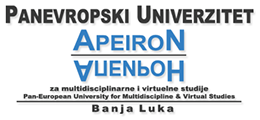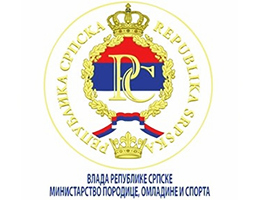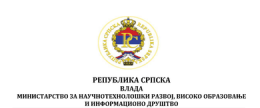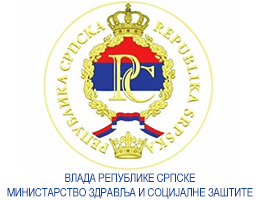RELATION BETWEEN PHYSICAL EDUCATION QUALITY AND TEACHERS’ COMMUNICATION STYLE – DIFFERENTIAL ANALYSIS
Volume 15, Issue V (2025)
Volume 15, Issue V (2025)
RELATION BETWEEN PHYSICAL EDUCATION QUALITY AND TEACHERS’ COMMUNICATION STYLE – DIFFERENTIAL ANALYSIS
Abstract:
The conducted research was focused on the communication aspect of the implementation of Physical Education (PE) with the main goal of determining the influence of different communication dimensions on the implementation quality of individual parts of the lesson. The sample of respondents consisted of 120 student teachers of kinesiology, who taught classes with upper primary school students. Data on teaching quality and communication modality were collected using the direct observation method with the application of the Questionnaire for the assessment of the teaching process quality (QT) and Questionnaire for the evaluation of interpersonal communication modality (QC). The influence of communication dimensions on the quality of individual parts of the PE lesson was determined by applying a series of regression analyses. The obtained findings confirmed the significant relations between the communication dimensions and the implementation quality of all lesson parts. The size of the relations grew with the increase in the duration and complexity of the individual lesson part, where the main parts of the lesson, in which the learning and teaching of more complex kinesiology content and the application of different methods and methodical organizational forms of work come to the fore, required more pronounced communication skills. The research confirmed the importance of quality communication in teaching with spe- cial emphasis on the need to develop these skills in future teachers, as a prerequisite for quality work in all aspects of the educational process.
Keywords:
PE lesson; lesson articulation; educational communication; primary school children.
Full Text:
References:
Androja, L., Bavčević, T., Jurčev Savičević, A., Bavčević, D., Ninčević, J., Buljan, A., Nonković, D., Rodrigues, V., & Karin, Ž. (2023). Body Mass Index Trends before and during the COVID-19 Pandemic in Primary School Students in Split-Dalmatia County, Croatia: A Retrospective Study. Nutrients, 16(1), 50. https://doi.org/10.3390/nu16010050
Androja, L., Miočić, J., Adžić, D., & Bilić, Ž. (2020). Influence of attending extracurricular sports activities on functional abilities of fifth and sixth grade elementary school students. Sportlogia, 16(1), 31–40. https://doi.org/10.5550/sgia.201601.en.amab
Ariyani, E. D., & Hadiani, D. (2019). Gender Differences in Students’ Interpersonal Communication. Responsible Education, Learning and Teaching in Emerging Economies, 1(2), 67–74. https://doi.org/10.26710/relate.v1i2.1125
Babin, B., Bavčević, T., & Vlahović, L. (2013). Correlations of motor abilities and motor Skills in 11-year-old pupils. Croatian Journal of Education: Hrvatski Časopis Za Odgoj i Obrazovanje, 15(2), 251–274.
Bavčević, D., Androja, L., & Bilić, Ž. (2022). Integrative approach to motor development in kinesiological education. Acta kinesiologica, N1 2022. https://doi.org/10.51371/issn.1840-2976.2022.16.1.6
Bavčević, T. (2010). Analiza povezanosti dimenzija interpersonalne komunikacije i kvalitete nastavnog procesa u kineziološkoj edukaciji. Sveučilište u Splitu, Kineziološki fakultet. [in Croatian]
Bavčević, T. (2012). Influence of the interpersonal communication on the perception of the physical education teaching process. Roceedings Book ofthe 4th International Scientific Conference “Contemporary Kinesiology,” 617–624.
Bavčević, T. (2015). Interpersonal communication in education – kinesiological perspective. Proceedings Book of the 5th International Scientific Conference “Contemporary Kinesiology,” 508–518.
Bavčević, T. (2016). Interpersonal Communication in Education – Analysis and Systematisation of Research Directions/Interpersonalna komunikacija u edukaciji – analiza i sistematizacija pravaca istraživanja. Croatian Journal of Education - Hrvatski Časopis Za Odgoj i Obrazovanje, 18(4), Article 4. https://doi.org/10.15516/cje.v18i4.1919
Bavčević, T., Babin, J., & Prskalo, I. (2006). Complex group organizational forms – an optimizing factor in physical education instruction. Kinesiol- ogy, 38(1), 28–39.
Bavčević, T., Babin, J., & Vlahović, L. (2005). Komunikološki aspekti nastave tjelesne i zdravstvene kulture. Zbornik Radova 14. Ljetne Škole Kine- ziologa Republike Hrvatske - Informatizacija u Područjima Edukacije, Sporta i Sportske Rekreacije, Rovinj. Zagreb: Hrvatski Kineziološki Savez, 56–60. [in Croatian]
Bavčević, T., Prskalo, I., & Bavčević, D. (2018). A comparative analysis of different models for management of the teaching process in physical edu- cation. Acta Kinesiologica, 12(2), Article 2.
Bilić, V. V., Gajger, V., Fajdetić, M., Zebić, S., Shita, V., Prskalo, I., Blagović, A., Sorić, I., Vlahović-Štetić, V., & Burcar, Ž. (2005). Izbor tema za satove razrednih odjela.
Bratanić, M. (n.d.). Mikropedagogija, Interakcijsko-komunikacijski aspekt odgoja, Priručnik za studente i nastavnike. Školska knjiga. [in Croatian] Brown, D. F. (2005). The Significance of Congruent Communication in Effective Classroom Management. The Clearing House: A Journal of Educa-
tional Strategies, Issues and Ideas, 79(1), 12–15. https://doi.org/10.3200/TCHS.79.1.12-15
Christensen, L. J., & Menzel, K. E. (1998). The linear relationship between student reports of teacher immediacy behaviors and percep- tions of state motivation, and of cognitive, affective, and behavioral learning. Communication Education, 47(1), 82–90. https://doi. org/10.1080/03634529809379112
Dyson, B. (2014). Quality Physical Education: A Commentary on Effective Physical Education Teaching. Research Quarterly for Exercise and Sport, 85(2), Article 2. https://doi.org/10.1080/02701367.2014.904155
Feito, Y., Heinrich, K., Butcher, S., & Poston, W. (2018). High-Intensity Functional Training (HIFT): Definition and Research Implications for Im- proved Fitness. Sports, 6(3), 76. https://doi.org/10.3390/sports6030076
Findak, V. (2003). Metodika tjelesne i zdravstvene kulture—Priručnik za nastavnike tjelesne i zdravstvene kulture. Školska knjiga. [in Croatian] Findak, V., & Prskalo, I. (2003). Kineziološko gledište o suvremenoj odgojnoj i obrazovnoj problematici. Četvrti Sabor Pedagoga Hrvatske: Odgoj,
Obrazovanje i Pedagogija u Razvitku Hrvatskog Društva, 143–148. [in Croatian]
Findak, V., Prskalo, I., & Babin, J. (2011). Sat tjelesne i zdravstvene kulture u primarnoj edukaciji. Zagreb: Učiteljski fakultet Sveučilišta u Zagrebu. [in Croatian]
Findak, V., Prskalo, I., & Pejčić, A. (2003). Additional exercise as an efficiency factor in physical education lessons. Kinesiology, 35(2), 143–154.
García-Fariña, A., Jiménez Jiménez, F., & Anguera, M. T. (2022). Do Physical Education Teachers Use Socioconstructivist Communication Patterns in Their Classes? Journal of Teaching in Physical Education, 41(2), Article 2. https://doi.org/10.1123/jtpe.2020-0213
Genurianto, G., Ambardini, R. L., & Suharjana. (2021). Interpersonal Skills’ Analysis of Students in Physical Education Subjects in the Pan- demic Situation: 4th International Conference on Sports Sciences and Health (ICSSH 2020), Malang, Indonesia. https://doi.org/10.2991/ ahsr.k.210707.008
Kilby, B. (2023). Gender and communication in children and school: Aligning theory and evidence. SN Social Sciences, 3(2), 36. https://doi. org/10.1007/s43545-023-00622-w
Krahe, C., Escamilla-Fajardo, P., & López-Carril, S. (2021). The influence of teacher-student communication on the importance of physical education.
Facta Universitatis, Series: Physical Education and Sport, 635. https://doi.org/10.22190/FUPES200916061E Lorger, M., Findak, V., & Prskalo, I. (2013). Kineziološka metodika: Vježbe: Priručnik za praćenje vježbi: Učiteljski studij. Malić, J., & Mužić, V. (1983). Pedagogija. Školska knjiga. [in Croatian]
Oh, P. S. (2005). Discursive Roles of the Teacher during Class Sessions for Students Presenting their Science Investigations. International Journal of Science Education, 27(15), 1825–1851. https://doi.org/10.1080/09500690500239714
Pedota, P. (2007). Strategies for Effective Classroom Management in the Secondary Setting. The Clearing House: A Journal of Educational Strategies, Issues and Ideas, 80(4), 163–168. https://doi.org/10.3200/TCHS.80.4.163-168
Pejčić, T., Babin, B., & Vlahović, L. (2021). Evaluation of motor achievements in physical education in lower elementary school grades. Sport Sci- ence: Međunarodni Časopis Iz Područja Kineziologije, 15, 97–105. [in Croatian]
Pop, C. L. (2014). Improving Interpersonal Communication for a Higher Quality of Physical Activities. Procedia - Social and Behavioral Sciences, 116, 4983–4987. https://doi.org/10.1016/j.sbspro.2014.01.1059
Prskalo, I., Babin, J., & Bavčević, T. (2010). Metodički organizacijski oblici rada i njihova učinkovitost u kineziološkoj edukaciji. Metodika : Časopis Za Teoriju i Praksu Metodikâ u Predškolskom Odgoju, Školskoj i Visokoškolskoj Izobrazbi, 11(1), 34–43. [in Croatian]
Reese,J.(2007).TheFourCsofSuccessfulClassroomManagement.MusicEducatorsJournal,94(1),24–29.https://doi.org/10.1177/002743210709400106 Vlahović, L., Babin, B., & Babin, J. (2015). Povezanost motoričkih sposobnosti i nastavne teme stoj na rukama uz okomitu plohu kod jedanaestogodišnjih učenica. Proceedings Book of the 5th International Scientific Conference” Contemporary Kinesiology”. Split: Faculty of Kinesiology, Univer-
sity of Split, Croatia, 558–566. [in Croatian]
Vlahović, L., Babin, B., & Pejčić, T. (2020). Struktura morfoloških karakteristika i motoričkih sposobnosti dječaka predškolske dobi. 10. Međunarodna Konferencija „Sportske Nauke i Zdravlje “, 41–41. [in Croatian]






